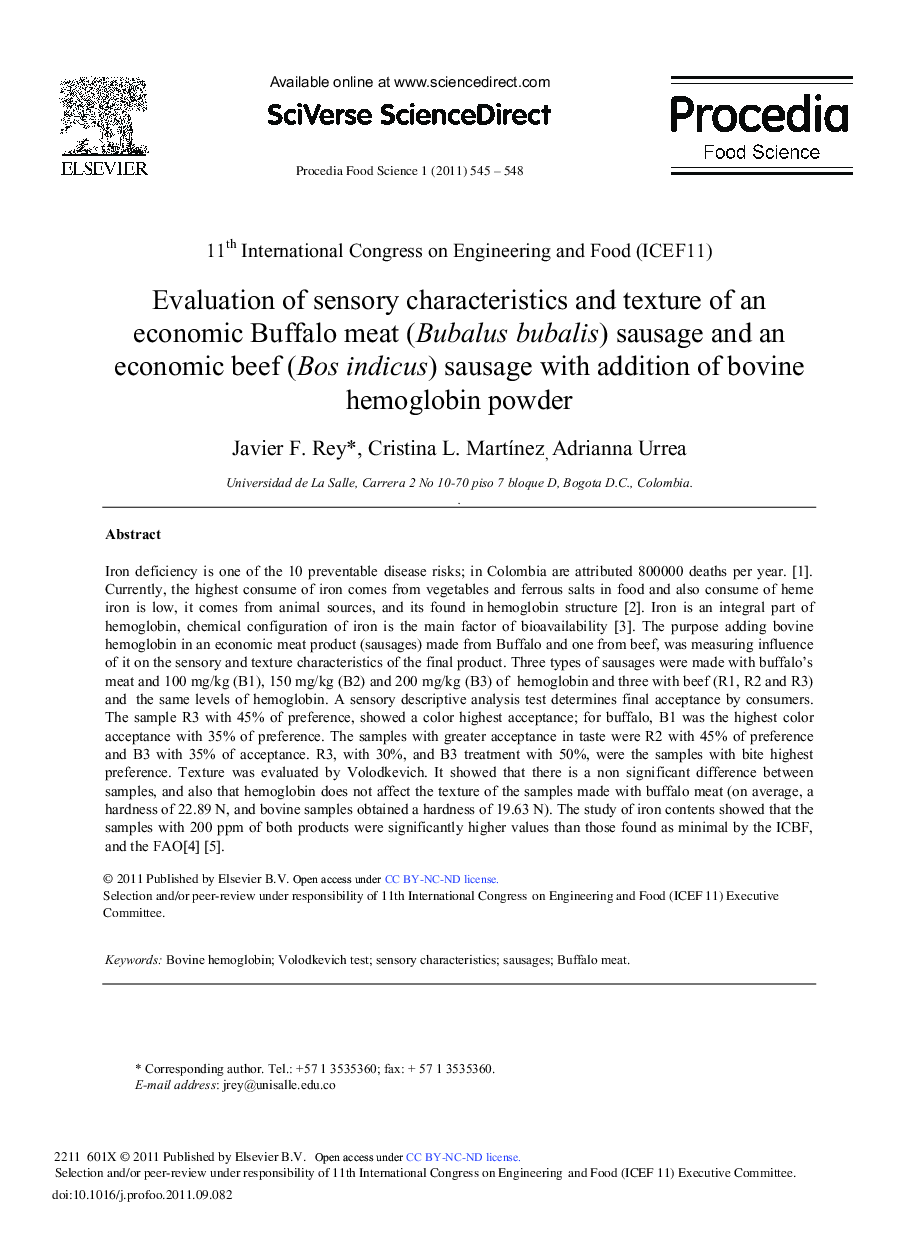| Article ID | Journal | Published Year | Pages | File Type |
|---|---|---|---|---|
| 1264990 | Procedia Food Science | 2011 | 4 Pages |
Iron deficiency is one of the 10 preventable disease risks; in Colombia are attributed 800000 deaths per year. [1]. Currently, the highest consume of iron comes from vegetables and ferrous salts in food and also consume of heme iron is low, it comes from animal sources, and its found in hemoglobin structure [2]. Iron is an integral part of hemoglobin, chemical configuration of iron is the main factor of bioavailability [3]. The purpose adding bovine hemoglobin in an economic meat product (sausages) made from Buffalo and one from beef, was measuring influence of it on the sensory and texture characteristics of the final product. Three types of sausages were made with buffalo's meat and 100 mg/kg (B1), 150 mg/kg (B2) and 200 mg/kg (B3) of hemoglobin and three with beef (R1, R2 and R3) and the same levels of hemoglobin. A sensory descriptive analysis test determines final acceptance by consumers. The sample R3 with 45% of preference, showed a color highest acceptance; for buffalo, B1 was the highest color acceptance with 35% of preference. The samples with greater acceptance in taste were R2 with 45% of preference and B3 with 35% of acceptance. R3, with 30%, and B3 treatment with 50%, were the samples with bite highest preference. Texture was evaluated by Volodkevich. It showed that there is a non significant difference between samples, and also that hemoglobin does not affect the texture of the samples made with buffalo meat (on average, a hardness of 22.89 N, and bovine samples obtained a hardness of 19.63 N). The study of iron contents showed that the samples with 200 ppm of both products were significantly higher values than those found as minimal by the ICBF, and the FAO[4] [5].
